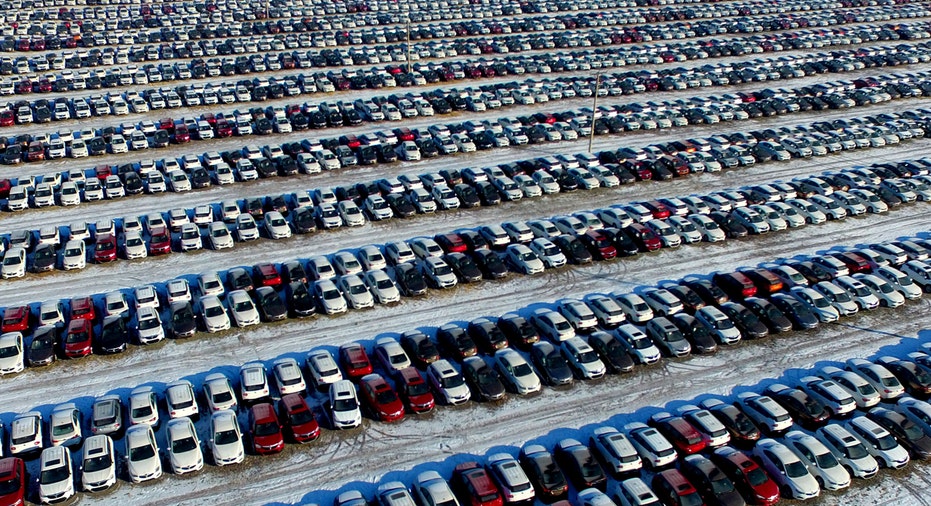China sets new deadline for electric-car production

China will force foreign car makers here to start manufacturing electric vehicles in 2019—a one-year reprieve from an earlier proposal that auto companies had fought against, but still the strongest national initiative yet to spur alternatives to gasoline and diesel cars.
Under a long-awaited plan announced Thursday, China will set gradually escalating quotas for pure-electric cars, plug-in hybrids and fuel-cell cars, as Beijing seeks to curb air pollution and nurture a domestic green-car industry.
The quotas will be enforced through a credit-score system in which each pure-electric car scores between 2 and 5 credits, and plug-in hybrid cars score 2 credits.
In 2019, most local and foreign auto makers must earn points equivalent to 10% of vehicles they produce in China and import into the country, the Ministry of Industry and Information Technology said in a statement. That rises to 12% in 2020.
China’s aggressive push for more electric cars in the world’s biggest auto market is having a ripple effect globally, compelling auto makers to pursue an electric agenda despite consumer reservations, according to industry experts.
China’s push, as well as recent scandals over auto makers falsifying fuel efficiency data, have also spurred European regulators to consider tighter regulations.
“China has triggered the worldwide electric car festival,” said Takaki Nakanishi, an automotive analyst who heads Nakanishi Research Institute in Tokyo. “The adoption of electrification regulations is speeding up globally.”
In a partial victory for foreign car manufacturers, China agreed to delay implementation until 2019, instead of next year as originally envisioned in draft proposals.
Among other objections, auto makers said they would be hard-pressed to build the needed manufacturing infrastructure by next year.
In another concession, the Ministry of Industry and Information Technology, which oversees the auto industry, said even if targets aren’t met the first year, auto makers won’t be punished. Any negative creditsin 2019 can be carried over to the following year, it said, which means that actual enforcement starts at the end of 2020.
However, even in its watered-down form, the quota system is a daunting prospect for car manufacturers who must now retool factories and rush electric vehicle concepts into production.
“Even though the 2018 quota has been scrapped, this is still not an easy hurdle for us,” said Keitaro Nakamura, a China-based spokesman for Japan’s Honda Motor Co. (NYSE:HMC). Honda, which sold 1.25 million vehicles in China in 2016—none of which were electric cars or plug-in hybrids—plans to start selling made-in-China pure-electric vehicles in 2018.
China is notorious for air pollution in its major cities, which the government says it is committed to improving. The new quotas, the government said, are meant to further “alleviate energy and environmental pressures.” China recently said it plans to eventually ban traditional gasoline and diesel vehicles, but hasn’t set a timetable.
Foreign auto makers who build cars in China must do so through joint ventures with Chinese partners to avoid steep tariffs. Along with the deadline for implementation, foreign auto makers were concerned that the mandates would essentially force them to give away proprietary technology to their Chinese partners.
Chinese officials have denied claims that the plan was aimed at appropriating foreign technology, but the plan’s introduction comes amid heightened scrutiny of China’s trade practices. In August, U.S. Trade Representative Robert Lighthizer launched an investigation into Chinese policies on intellectual property and technology transfer.
China’s auto sector is one of those in Mr. Lighthizer’s crosshairs.
While foreign auto makers have been struggling to interpret Beijing’s intentions in the months since the draft rules first appeared, Chinese auto makers, many of them state run, have long been privy to Beijing’s plans, said Kenneth Jarrett, president of the American Chamber of Commerce in Shanghai.
“That has given them an unfair advantage in what should be a competitive market with a level playing field,” he said.
The same rules apply to Chinese auto makers, but most of them, at the government’s behest, already produce electric vehicles, and will easily likely meet the requirements, according to industry experts.
Anticipating the new rules, Ford Motor Co. (NYSE:F), the Renault-Nissan Alliance and Volkswagen AG have all set up new joint ventures with local car makers in recent months that will specialize in pure-electric cars.
Volkswagen says its new JV with JAC Motors will be ready to produce 80,000 to 100,000 pure-electric cars next year—potentially enough to earn sufficient credits for the entire Volkswagen group.
However, auto makers that solve the problem of building enough electric vehicles will face a second challenge, said Jing Yang, an associate director at Fitch Ratings: what to do with them all. “The major problem is finding a market for them,” said Ms. Yang. “They may want to start at the low end.”
Some auto makers are also setting up ride-sharing services, or are striking deals with fleet operators, to ensure the electric vehicles the government is forcing them to build will have a home.



















